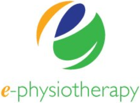Muscle tears can happen spontaneously, due to trauma or sport and leisure activites. The most common area for Spontaneous muscle tears is in the shoulder rotator cuff, especially as people get older. Calm muscle (gastrocnemius and soleus) tears are commonly caused during sports such as running or athletics. They can even happen with walking, more specifically hill walking where there is increased load on the calf muscle as you go up hill.
If you have a large muscle tear, the muscle will swell and bruise quickly. In the more extremem examples in minutes. Less severe muscle tears may swell and bruise overmnight and less severe tears may not visibly swell or bruise. IOt is important to remember that a mild deep muscle tear may only show bruising a week after the injury as the blood makes its way more superficially.
If you think you have torn a muscle, it is best to be assessed by a physiotherapist. The right treatment early can speed your recovery and have you back to your leisure and sporting activities. Larger tears may need a consultant opinion about a repair and this is especially true with shoulder rotator cuff tears. Calf tears may be more comfortable with a compression bandage and using crutches to reduce the load on the calf initially. Physiotherapists can use ultrasound, laser and interferential treatments to speed up your recovery by helping to reduce pain and swelling. Manual therapy a week or two after a muscle tear can help your muscle recover with more strength and flexibility. Progressive balance and strengthening exercises are needed to help prevent a recurrence and to improve the quality of the tear healing.

